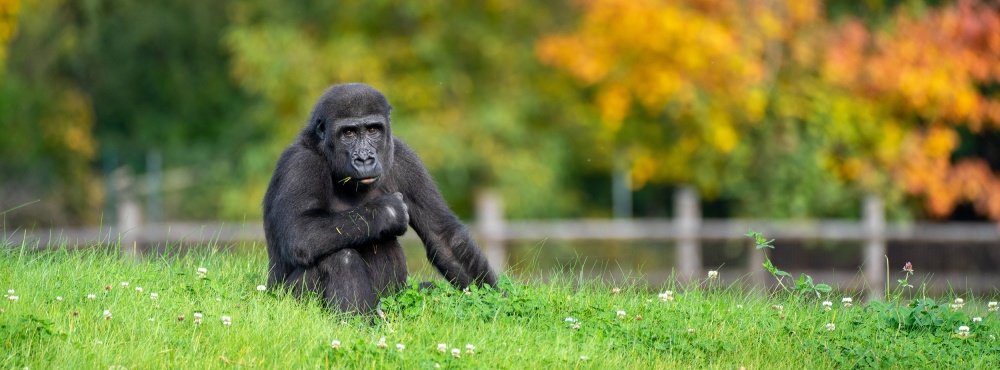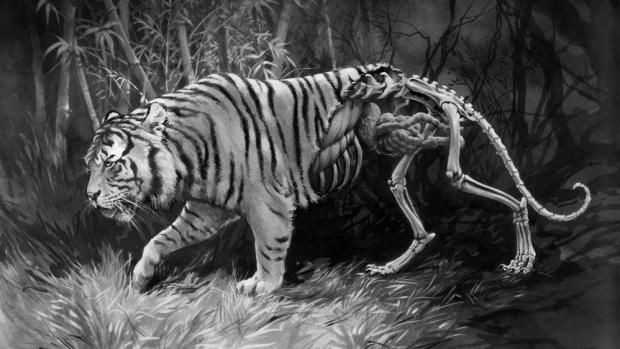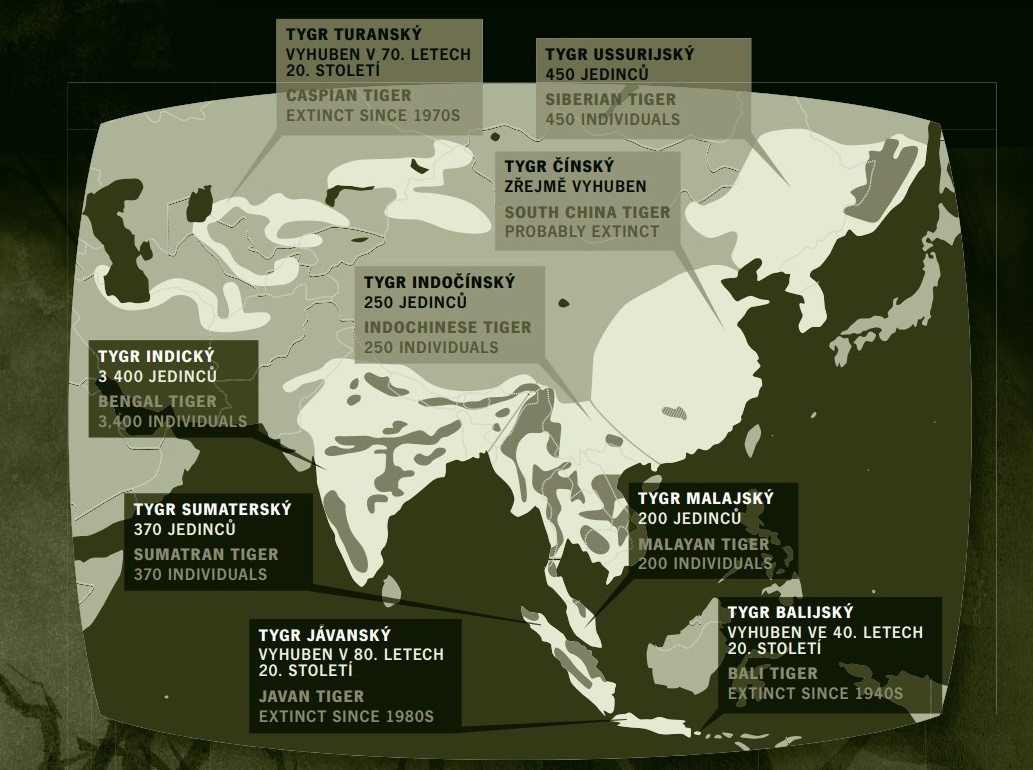Tiger crisis

There were perhaps up to one hundred thousand tigers living in the wild at the turn of the 19th and 20th centuries. However, by 2022, the population size was estimated at approximately 4,600 tigers, of which 3,100 were mature. Moreover, all extant subspecies apart from the Bengal tired numbered in the hundreds.

CAUSES OF THE DECREASE OF TIGERS
• Killing of tigers as pests—until the mid-20th century
• Chase for trophies—until the beginning of the 1970s
• Fashion of tiger furs—1960s in the West, after 2000 in Asia
• Habitat destruction—the entire 20th and 21st centuries
• Mass demand for oriental medicine using parts of tiger body—since the 1980s
SHOULD WE PROTECT WHITE TIGERS?
White tigers are not a separate species or subspecies but only a colour variation. Moreover, those in Western breeding facilities are hybrids of two different subspecies in which the white colouration has been fixed through inbreeding—resulting in a frequent occurrence of birth defects. As a result, breeding white tigers holds no conservation value.
USEFUL HUNTER
The tiger is an apex predator that requires a large territory with plenty of game. For tigers’ survival, we must therefore ensure the survival of many other animal species. The tiger is thus a true umbrella species—by protecting it, we shelter the entire ecosystem under a “protective umbrella”.
VANISHING SPECIES
Tigers used to inhabit a vast range and a large variety of habitats. However, only five out of the nine known subspecies survive in the wild today due to human interference. Moreover, these live only in a fraction of their original range.

USE OF TIGER PARTS
Various medical effects are attributed to tiger’s body parts in China and many other Asian countries. Wild tigers are therefore under intense pressure from poachers, while others live in appalling conditions on farms where they are kept as slaughter animals.
There is really no proof that these cures actually work.
Eyes—against epilepsy and fevers and to improve eyesight
Whiskers—against toothache
Teeth—to treat purulent wounds and tuberculosis
Blood—to strengthen the organism
Fat—against nausea and haemorrhoids
Muscles—against faints and malaria
Penis—as an aphrodisiac
Bile—against febrile seizures
Bones—to strengthen the organism, relief from pains and against inflammations
Fur—as a decoration
Claws—as a good-luck charm
WE CAN MAKE THE DIFFERENCE
Tigers may not live in Europe, but our behaviour affects their survival.
• Tigers in South-East Asia are losing their home due to extensive planting of oil palm.
• The palm oil is a common part of food and cosmetics in Europe and it is also used as a fuel for planes.
Let’s choose products that do not harm tigers.
ENGLISH: Tygří krize
ZOOPRAHA.CZ
Contacts
- The Prague zoological garden
U Trojskeho zamku 120/3
171 00 Praha 7
Phone.: (+420) 296 112 230 (public relations department)
e-mail: zoopraha@zoopraha.cz
Others








